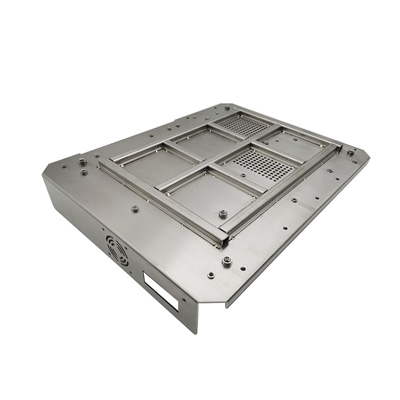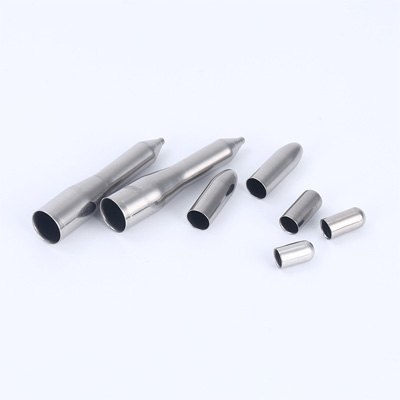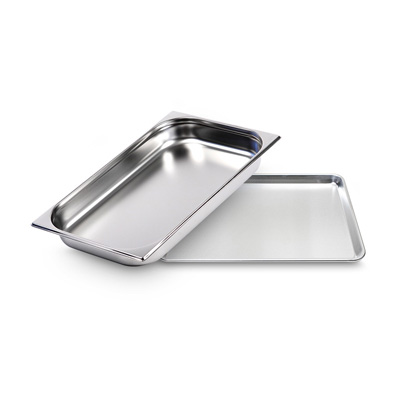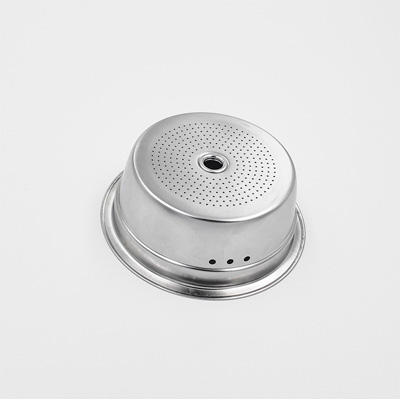
Common problems and solutions during the stainless steel stamping process:
The main reason for scratches on the surface of stainless steel stamping parts is that there is relative movement between the workpiece and the mold surface. Under the effect of a certain pressure, the blank directly conflicts with the surface of the mold part. In addition, the deformation heat of the blank causes the blank and metal chips to be deposited on the surface of the mold. on the surface of the workpiece to cause scratches.

Austenitic stainless steel has a high cold work hardening index and will undergo phase transformation to induce martensite phase during deformation. Martensite is relatively brittle and prone to cracking. During plastic deformation, as the amount of deformation increases, the induced martensite content will also increase with the increase in the amount of deformation, resulting in a greater residual stress, making it easier to crack during processing. In the sheet metal stamping forming process, the main factors that affect product quality are the organization, performance, and process parameters of the sheet metal. Therefore, the more uniform the sheet metal structure, the better the deep drawing performance, and the less likely it is to break. In addition, during the stamping process, when the punch pressure acts on the stainless steel plate, the deformation resistance is greatest in the direction perpendicular to the plate surface, while the deformation resistance in the direction parallel to the plate surface is relatively small; when the resistance flows into the flange part of the sheet, the stress When the material increases, the flange is easily deformed, and the smaller the material is reinforced on the punch shoulder, the easier it is to break at the punch shoulder. The mold gap is too small, the centering of the convex and concave molds is uneven, the mold base and the mold guide lack precision, etc., which will cause mold wear; the same mold is stamped for a long time, causing the punch to overheat, and the mold design is biased, resulting in increased lateral force For example, the lateral force during nibbling, punching or shearing will cause the punch to tilt to one side, causing serious mold wear and tear, and may also cause the part to break.
The stamping performance of the sheet can be improved by optimizing the sheet annealing process. Strengthen the plane strain orientation of internal grains and increase the deformation resistance of the sheet. At the same time, the pressure distribution is adjusted according to the forming status of the part during mold debugging to avoid cracking.

Factors such as the sharpness of the cutting edge of the mold, the mold input amount of the mold, and whether the gap between the mold is reasonable will all cause the mold to have material problems; if non-special stamping oil is used, problems such as gumming and viscosity increase due to oxidation of the oil may occur. Strips will also appear.
Materials will rebound after stretching and molding. Due to the high hardness of stainless steel, the material rebounds greatly. When designing the molding mold, it is necessary to predict the amount of rebound of the material and prepare anti-rebound , to minimize dimensional problems caused by material rebound.
Many stainless steel stamping and drawing parts have higher hardness requirements, but because the harder the material, the more difficult it is to stretch. Sometimes it is necessary to heat treat after forming to meet the hardness requirements, but the workpiece after heat treatment is prone to deformation. , the amount of deformation needs to be taken into consideration when designing the mold.

Stainless steel has high hardness and will cause relatively large losses to the mold cutting edge. Therefore, when selecting convex and concave mold materials, it is necessary to make appropriate choices based on the hardness of the stainless steel material.
The selection of stainless steel stamping oil is extremely important. Qualified stamping and stretching oil contains sulfur and chlorine compound additives, which can prevent problems such as hardening, deformation, burrs, and cracks in the workpiece. In order to make the workpiece easy to clean, stamping and stretching oil with low viscosity should be used as much as possible.
Properly arranging the process, using special stamping and drawing oil, and selecting reliable raw materials can improve the quality of the workpiece.

